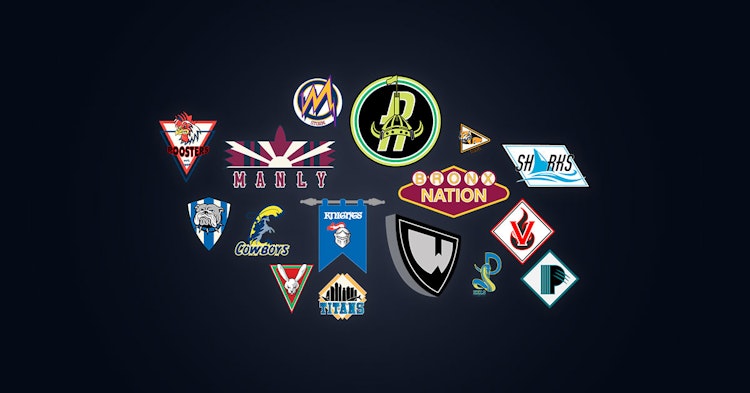Average running metres per game in 2019 - The Good, Bad and Ugly
Last updated: Aug 21, 2019, 2:25AM | Published: Aug 20, 2019, 8:19PM
Rugby league is a simple game.
It's what makes it so easy to consume at any level. You've got six tackles to get the ball over the line in attack. Defend six, and you get another go.
It's easy.
To make things even easier, teams look to win the battle in the middle of the field. The closer your heavies can get to the opposition goal line, the more opportunities you have to attack in good ball areas.
Recent history suggests those that run the farthest go deeper into September. Four of the last five premiers have finished inside the top two in the competition for average running metres per game. However, if you fail to get up the field and create attacking chances, the W's stay at bay.
Rugby league is a yardage game as much as it is a simple one.
The proof is in the pudding in 2019.
The Good
The Sea Eagles lead the way in running metres and runs in 2019 with 1,671 metres on 187.1 runs per game. Their improvement on 2018's 1,454 metres (8th) and 157.1 runs (13th) has been a significant factor in their rise from 15th in 2018 to their current 4th position on the ladder through 22 rounds in 2019.
Tom Trbojevic running for the third-most metres in the NRL at 202.4 per game adds plenty to Manly's overall number, but he doesn't make those metres without the forwards laying a platform in front of him.
Marty Taupau and Addin Fonua-Blake have become one of the premier prop pairings in the competition.
Taupau is into his fourth consecutive season running for over 140 metres per game with 152. 5 per game in 2019. He's been one of Manly's most reliable players throughout their recent up and down years. It's Fonua-Blake that has been the major difference. In his just his fourth first-grade season, he's increased his yardage from 126.6 metres per game in 2018 to 164.6 metres per game in 2019. David Klemmer and Payne Haas are the only two props to average more metres than the Tongan international.
It puts Manly in a strong position as premiership smokies, too. The Stats Insider Futures Model has them on the fourth line of premiership contenders at 6.7%.
The two premiership favourites occupy 2nd and 3rd on the running metres list in 2019 with the Storm's 1,656 metres just pipping the Roosters' 1,653 metres per game.
<ad>
Jesse Bromwich and Nelson Asofa-Solomona do plenty of damage through the middle for their combined 247.5 metres per game. The Kiwi duo are of the more underrated parts of the Storm juggernaut. Likewise, Dale Finucane and his 131.3 metres per game is just starting to be recognised as one of the premier lock forwards in the NRL.
Two that do receive more of the plaudits are Suliasi Vunivalu and Josh Addo-Carr. It's their speed, strength and consistent scoring that comes up in the pub, but their 250.5 running metres play a massive role in Melbourne's movement up the field.
The Storm top the premiership percentage list at 31.6% on the back of the go-forward generated through the middle.
Just as they are in average running metres per game, the Roosters are slightly behind the Storm at 30.4%.
Like Trbojevic for the Sea Eagles, James Tedesco leads the Roosters with 202.3 running metres per game. But again, he does that on behind a consistent middle.
Siosiua Taukeaho has become one of the most consistent props in the game over the last 12 months. His 156.9 metres per game is fifth amongst all props in the NRL. Beside him is fellow Auckland-born big man, Jared Waerea-Hargreaves. For every accusation of grubbiness put him on, Waerea-Hargreaves responds with another metre. The 30-year old is running for a career-high 138.1 metres per game in 2019.
With Daniel Tupou adding 172.1 metres from the left wing and either Brett Morris' 136.6 metres or Ryan Hall's 177.4 metres on the right wing, the Roosters fly up the field. Once they're up there, the Roosters are the most efficient attacking team in the NRL.
The Chooks average a league-leading 26.7 points per game while recording a league-low 24.1 tackles in the opposition 20-metre line per game.
With three of the competition's best teams occupying the top three spots on the running metres list and the Raiders at a respectable 8th, the correlation between running metres and wins is clear.
In recent years, anyway.
The Bad
The Cowboys, Dragons and Titans are all towards the bottom of the list in 2019.
It's incredible that all three can be so low with the forward packs they send out onto the field.
Jason Taumalolo is the best forward in the NRL running for 204.8 metres per game and is flanked by Josh McGuire, Matt Scott and Jordan McLean. Remarkably, North Queensland's 1,572 metres per game ranks 13th in the NRL.
Missing Jack de Belin all season has hurt the Dragons, but Tyson Frizell, Paul Vaughan, Tariq Sims and James Graham still take to the field every week. They've not been able to make up for a poor and ever-changing back five to be 14th in yardage with 1,527 metres per game. Vaughan leading the team with 141.3 metres says everything you need to know about St George Illawarra's ineffective back-five.
<ad>
Meanwhile, yardage is about the only part of the Titans roster you could circle as a significant strength before the season started. The reality is a lot different. Jarrod Wallace (147m), Jai Arrow (139.8) and Moeaki Fotuaika (134.8m) can only do so much. The Titans still rank 15th in the competition with just 1,525 running metres per game.
Given their struggles to get up the field, it's no surprise to see the trio occupy the bottom three spots on the NRL ladder after 22 rounds.
The Ugly
Averaging 1,512 running metres per game, the Knights are 16th in yardage. It will be the fourth consecutive season they've finished at the bottom of the running metres list should they stay there for another three rounds. The Knights won three straight wooden spoons before rising to 11th on the ladder in 2018. Another year of lacklustre go-forward looks set to keep them from rising much higher, though.
Despite adding David Klemmer's 175.4 metres per game over the summer, no other Knights forward averages triple-figures.
They signed Mitchell Pearce to spearhead the side and have one of the most exciting attacking talents in the game in Kalyn Ponga out the back. However, unlike the Sea Eagles, Storm and Roosters, the Knights don't set the foundations in the middle to compete with the elite teams.
As a result, they've fallen short of expectations to be 10th on the ladder, recently lost six games on the trot, and just "mutually agreed" to part ways with their coach at the end of the season.
The Knights looked to install all of the bells and whistles without first securing a reliable and robust chassis. Sure, they're improving, but they'll only go so far with the yardage numbers they're currently producing.
"Rugby league is a simple game played by simple people."
A word of advice for the next Knights coach: Win the yardage battle and you'll more than likely win the game.
Did you enjoy this article? Leave a comment below, or join the conversation on the Stats Insider Twitter or Facebook page.



